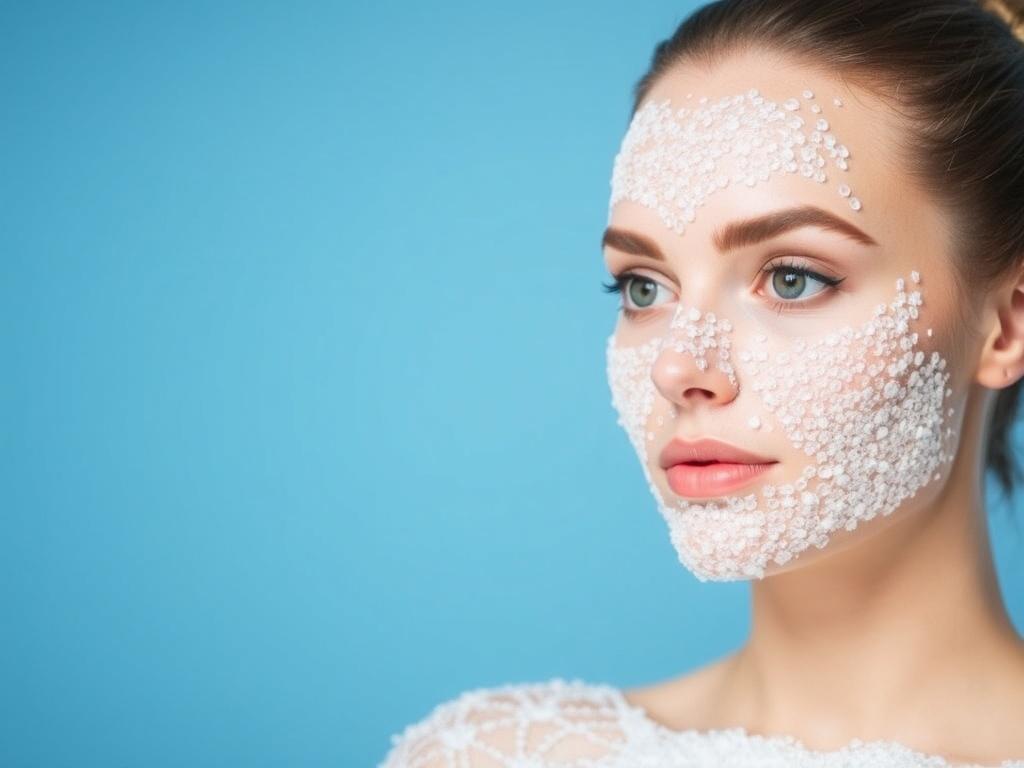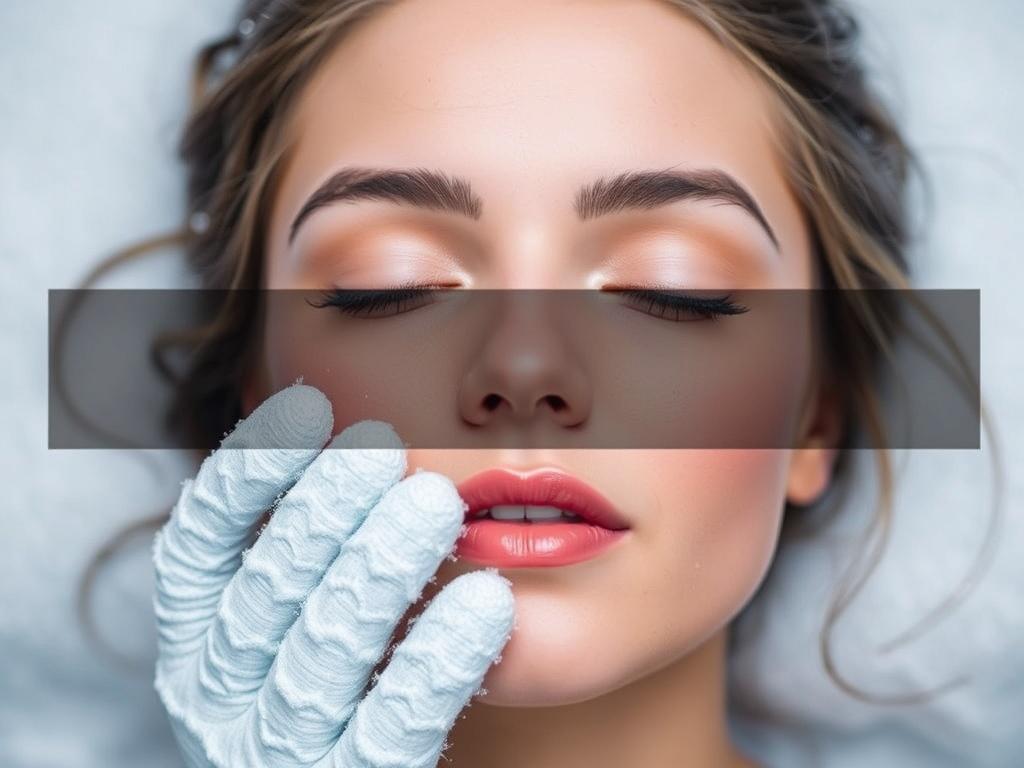Содержание статьи
- 1 What Exactly Is Cryotherapy for Skin?
- 2 The Science Behind Cryotherapy for Skin
- 3 Different Types of Cryotherapy for Skin and How They Work
- 4 Who Can Benefit Most from Cryotherapy for Skin?
- 5 Potential Risks and Side Effects of Cryotherapy for Skin
- 6 How to Prepare for and Maintain Cryotherapy Skin Treatments
- 7 Comparing Cryotherapy with Other Skin Treatments
- 8 What Do Users Say? Cryotherapy for Skin Reviews and Testimonials
- 9 Future of Cryotherapy in Skin Care
- 10 Conclusion
Cryotherapy for skin has surged in popularity over recent years, captivating the attention of beauty enthusiasts, dermatologists, and wellness seekers alike. From celebrity endorsements to trendy spa treatments, the cold therapy craze promises benefits ranging from clearer skin to anti-aging effects. But is cryotherapy for skin truly as helpful as claimed, or is it merely hype? In this article, we’ll delve deep into what cryotherapy is, how it works, and whether it deserves a place in your skincare routine. Along the way, we’ll explore scientific evidence, potential risks, and who stands to benefit the most.
What Exactly Is Cryotherapy for Skin?
Cryotherapy, in its simplest form, means “cold therapy.” Traditionally, it involves exposing the body or parts of it to extremely cold temperatures for a short time. Originating in medical settings to reduce inflammation and manage pain, cryotherapy has evolved into a treatment used in beauty and skincare. When it comes to the skin, cryotherapy can take multiple forms – from localized applications like spot treatments on warts or lesions to whole-face sessions aimed at rejuvenation.
One popular variant is “cryofacials,” where chilled air or liquid nitrogen is applied to the surface of the skin, with the goal of promoting collagen production, tightening pores, and improving overall skin texture. Another is whole-body cryotherapy, where individuals step into chambers cooled to as low as -200°F (-129°C) for a few minutes, purporting systemic benefits that extend to the skin.
But how does ice-cold air or liquid actually impact your skin cells? When the skin experiences intense cold, blood vessels constrict temporarily before dilating. This process can boost blood circulation and improve the delivery of oxygen and nutrients to skin cells, potentially stimulating repair and regeneration. Moreover, the extreme cold is thought to reduce inflammation, which is a root cause of many skin issues like redness, acne, or eczema.
The Science Behind Cryotherapy for Skin
To understand if cryotherapy for skin lives up to the hype, we need to take a closer look at the science. While the notion of “cold is good for your skin” is age-old, modern studies have started to test these claims more rigorously.
Benefits Supported by Research
Available scientific literature highlights some intriguing findings:
– **Anti-Inflammatory Effects:** Studies show that exposure to cold temperatures can reduce inflammation markers in the skin. This may help conditions like psoriasis, eczema, and acne.
– **Collagen Stimulation:** Cold treatments may stimulate fibroblast activity and collagen production, essential for skin elasticity and wrinkle reduction.
– **Enhanced Blood Flow:** The temporary constriction and subsequent dilation of blood vessels improve circulation, promoting a radiant complexion.
– **Oxidative Stress Reduction:** Cryotherapy appears to reduce oxidative stress in skin cells, lessening premature aging caused by free radicals.
Areas Where Evidence Is More Limited
Although the preliminary research is encouraging, many benefits of cryotherapy remain anecdotal or backed by small-scale studies:
– Skin tightening and pore reduction claims are largely based on user reports, without large clinical trials.
– Long-term effects on skin aging are not well established.
– Whole-body cryotherapy’s impact on skin health via systemic effects still needs more comprehensive research.
This underscores the need for more controlled, wider studies before declaring cryotherapy a miracle treatment for skin.
Different Types of Cryotherapy for Skin and How They Work
Cryotherapy for skin isn’t one-size-fits-all. You might come across several options depending on what you want to target. Here’s a quick overview of the most common types:
| Type of Cryotherapy | How It Works | Typical Uses | Session Duration |
|---|---|---|---|
| Localized Cryotherapy | Application of liquid nitrogen or cold sprays on targeted skin spots | Warts, skin tags, age spots | Seconds to minutes |
| Cryofacial | Spraying or blowing cold air (-20°C to -30°C) on the face | Skin rejuvenation, anti-aging, acne reduction | 10-15 minutes |
| Whole-Body Cryotherapy | Exposure in cryo chamber at -120°C to -200°C | General skin health, inflammation reduction, muscle recovery | 2-4 minutes |
Each method comes with its unique set of pros and cons, often tailored to the skin issue in question and user preference.
Who Can Benefit Most from Cryotherapy for Skin?
Cryotherapy for skin seems especially promising for certain groups. If you fit into one of these categories, it might be worth trying:
- People with inflammatory skin conditions: Conditions like eczema, psoriasis, or acne often involve chronic inflammation. Cold therapy can help calm irritated skin.
- Those seeking anti-aging solutions: With the potential to boost collagen and reduce oxidative stress, cryotherapy may slow visible aging signs.
- Individuals with sensitive skin: For some, cold therapy is gentler than chemical peels or laser treatments, making it an appealing alternative.
- Athletes and active people: Whole-body cryotherapy is popular for muscle recovery, and the associated skin benefits come as a bonus.
- Anyone looking for rejuvenation: The improved circulation and skin tone can make your complexion look fresher and more vibrant.
However, cryotherapy is not suitable for everyone. People with certain medical conditions like cold allergies, Raynaud’s disease, or cardiovascular issues should avoid these treatments or consult a doctor first.
Potential Risks and Side Effects of Cryotherapy for Skin
While cryotherapy for skin offers exciting benefits, it’s important to be aware of possible downsides to make an informed decision.
Common Side Effects
– Redness and temporary irritation are common immediately after treatment.
– Dryness or flaking can occur, especially with repeated sessions.
– Numbness or tingling if the cold exposure is excessive.
Serious Risks
– Frostbite or cold burns if improperly applied.
– Allergic reactions in rare cases.
– Worsening of symptoms in people with underlying cold sensitivity.
Precautions to Take
Always choose a reputable clinic or professional offering cryotherapy for skin, where sessions are supervised by trained personnel. Follow pre- and post-treatment care guidelines such as moisturizing and avoiding direct sun exposure.
How to Prepare for and Maintain Cryotherapy Skin Treatments
0
If you decide to give cryotherapy a try, preparation and aftercare play a key role in maximizing benefits and minimizing risks. Here are practical tips:
- Consult with a dermatologist to ensure cryotherapy suits your skin type and condition.
- Avoid applying makeup or heavy skincare products before the session.
- Wear appropriate clothing to protect areas not being treated.
- Moisturize well after the treatment to soothe skin.
- Use sunscreen daily to protect skin from environmental damage.
- Stay hydrated to support skin health post-therapy.
Keeping a consistent schedule, depending on the treatment type (for example weekly cryofacials or a limited number of whole-body cryotherapy sessions), can help maintain improvements.
Comparing Cryotherapy with Other Skin Treatments

When weighing whether cryotherapy for skin is helpful, it’s useful to compare it with other popular treatments:
| Treatment | Primary Benefits | Downsides | Cost Range |
|---|---|---|---|
| Cryotherapy | Reduces inflammation, stimulates collagen, improves circulation | Risk of cold burns, limited data on long-term effects | From $50 to $150 per session |
| Chemical Peels | Exfoliates dead skin, reduces acne scars, evens skin tone | Potential irritation, peeling downtime, sensitivity to sun | $100 to $300 per treatment |
| Laser Therapy | Targets wrinkles, scars, pigmentation, and vascular lesions | Expensive, some discomfort, risk of pigmentation changes | $300 to $1,500 per session |
| Microdermabrasion | Gentle exfoliation, improves skin texture and brightness | Multiple sessions needed, minimal immediate impact | $75 to $200 per session |
Cryotherapy offers a relatively low-cost, low-downtime option compared to more invasive procedures, making it attractive to many. However, it’s often best used as a complement rather than a replacement for these more established treatments.
What Do Users Say? Cryotherapy for Skin Reviews and Testimonials
One way to sense if cryotherapy for skin is hype or helpful is by looking at user experiences. The consensus tends to be mixed but generally positive:
- Many users report fresher, more toned skin after cryofacial sessions.
- Some note a reduction in redness and fewer acne outbreaks.
- Whole-body cryotherapy fans highlight improved skin glow alongside muscle recovery.
- Others find the effects temporary or subtle and prefer combining cryotherapy with other treatments.
Negative feedback often focuses on discomfort from the cold or lack of clear results after a few sessions. As with many skincare treatments, individual results can vary widely.
Future of Cryotherapy in Skin Care
As technology advances and more research emerges, cryotherapy for skin may unlock new applications and refined protocols. Innovations such as combining cryotherapy with topical antioxidants or growth factors are under exploration. The growing interest in natural, non-invasive treatments means cryotherapy is likely to remain a fascinating option in the skincare world.
Additionally, personalized cryotherapy programs tailored to specific skin types, concerns, and ages could increase its effectiveness and appeal.
Summary Table: Cryotherapy Pros and Cons
| Pros | Cons |
|---|---|
| Non-invasive and mostly painless | Risk of cold injury if done improperly |
| Reduces inflammation and redness | Limited long-term research data |
| May stimulate collagen and skin rejuvenation | Results can be subtle and gradual |
| Quick sessions with minimal downtime | Not suitable for all health conditions |
Conclusion

Cryotherapy for skin might sound like just another trendy beauty treatment, but beneath the hype lies a therapy rooted in genuine scientific potential. While the current body of research supports its anti-inflammatory, circulation-boosting, and collagen-stimulating effects, more extensive studies are necessary to fully validate many of the claims made by spas and enthusiasts. For people struggling with inflammatory skin problems or looking for a gentle, non-invasive way to refresh their complexion, cryotherapy can be a helpful addition to the skincare arsenal. However, it should be approached mindfully, taking into account medical history, realistic expectations, and safety guidelines. Like many wellness trends, cryotherapy is neither a miracle cure nor a waste of time – it’s a promising option that works best when tailored thoughtfully and combined with a balanced skincare routine. Ultimately, whether cryotherapy for skin is hype or helpful depends on individual needs, consistent use, and a watchful eye on future scientific developments.

